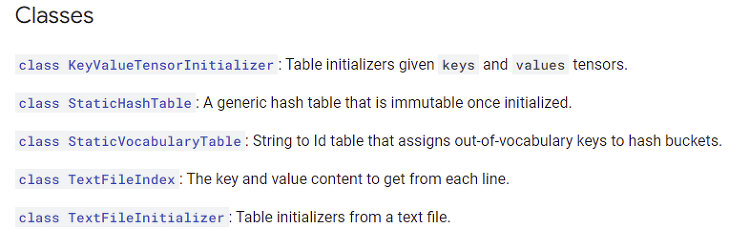tf.lookup 의 모듈에는 다음과 같은 클래스들을 가지고 있습니다. KeyValueTensorInitalizer tf.lookup.KeyValueTensorInitializer( keys, values, key_dtype=None, value_dtype=None, name=None ) 예제를 잠시 보겠습니다. 우선 keys,values값들은 텐서로 이루어져야 합니다. keys_tensor = tf.constant(['a', 'b', 'c']) vals_tensor = tf.constant([7, 8, 9]) input_tensor = tf.constant(['a', 'f']) init = tf.lookup.KeyValueTensorInitializer(keys_tensor, vals_tensor) ..
